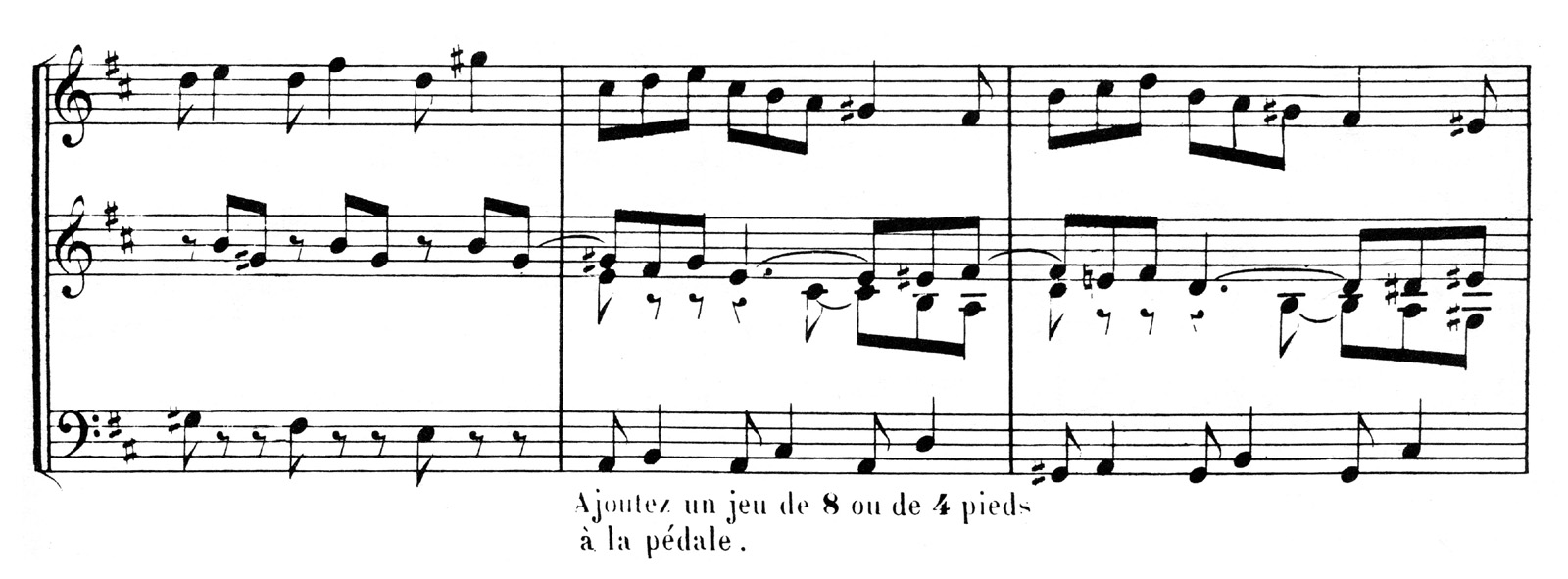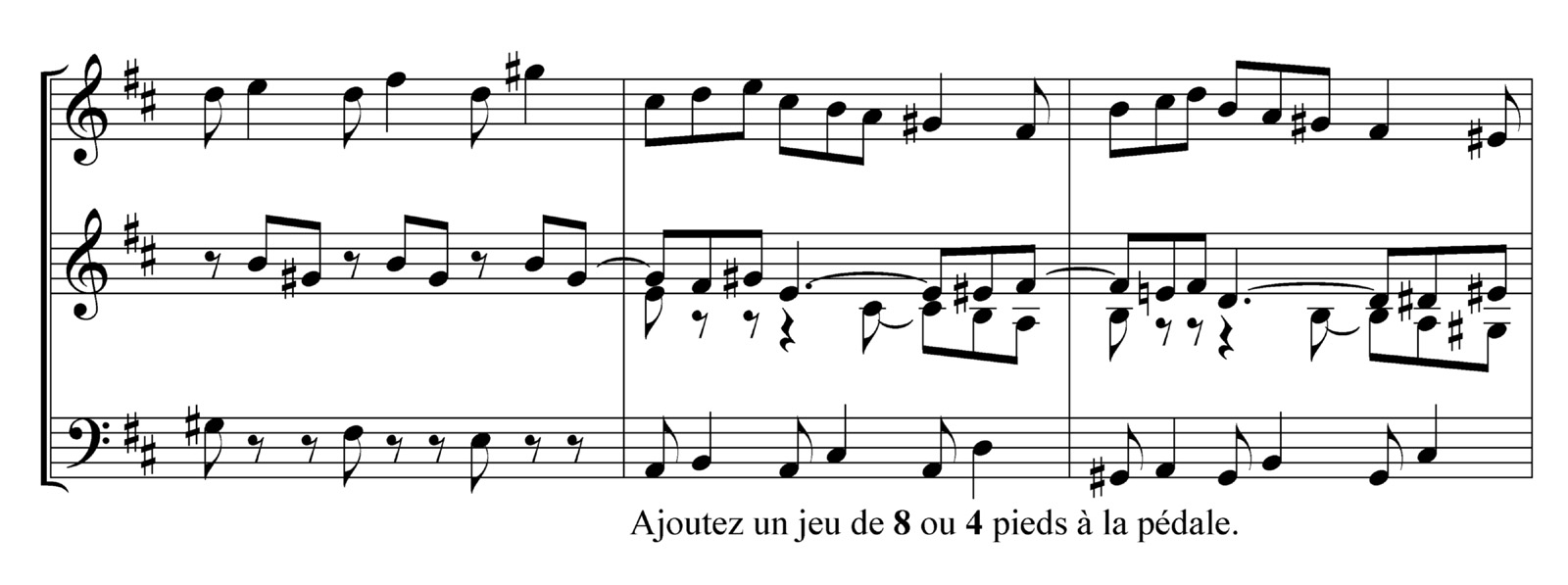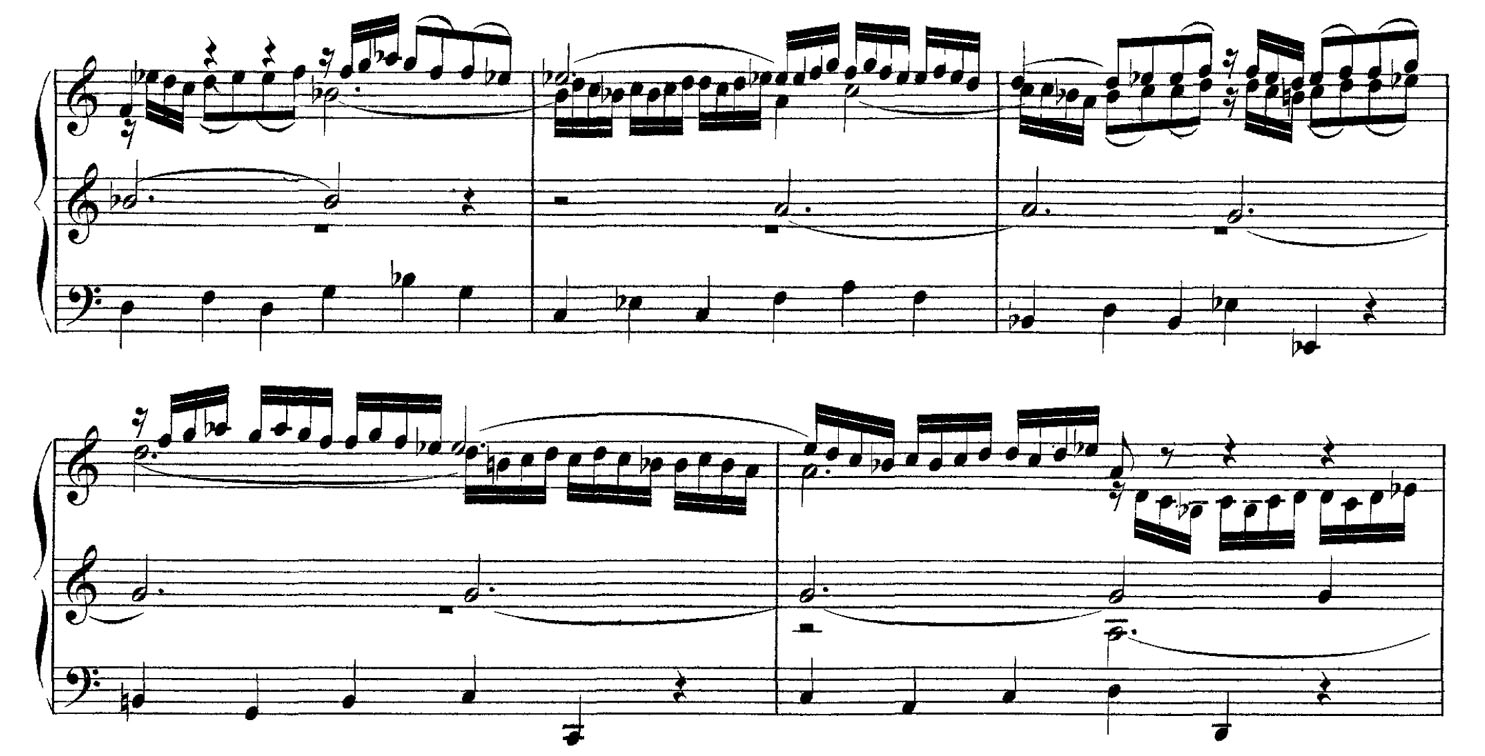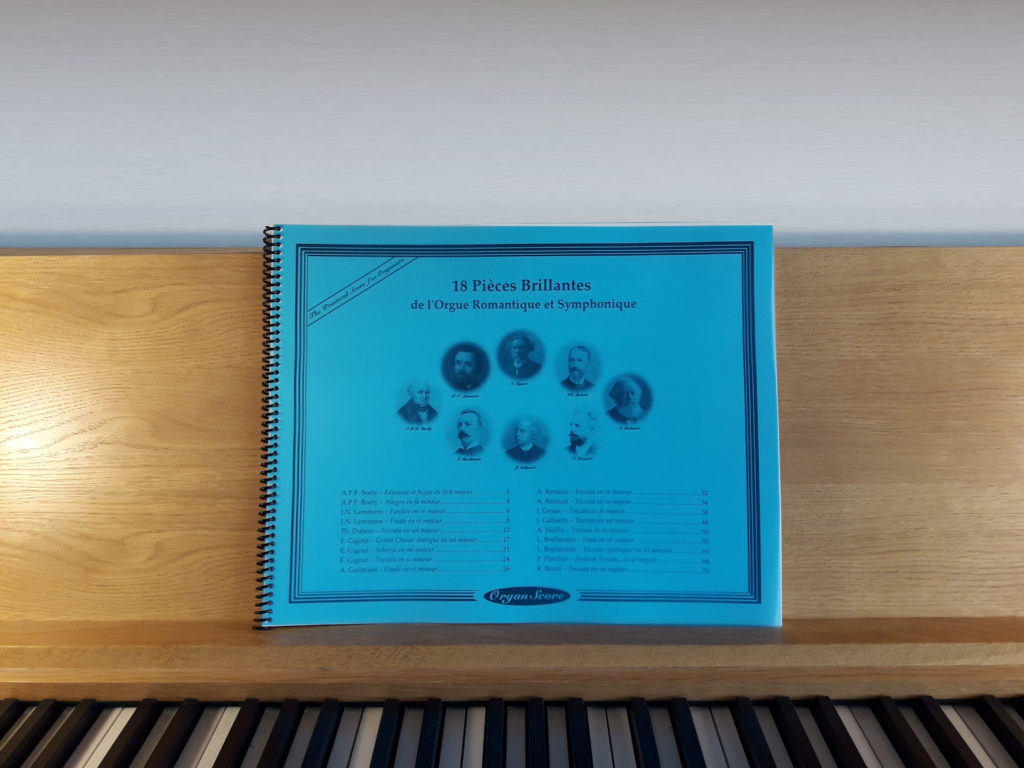OrganScore Edition Readability
When working on a piece, musicians follow the process of solving technical problems and slowly absorbing the text, with the aim of memorising all these elements. Many instrumentists will also play from memory. This is typically the case for pianists giving recitals.
For organists, it is just the same. However, because of the characteristics of the organ and its repertoire, organists very often use their score to play.
Therefore, the score is essential not only for rehearsal but also for public performance. That’s why I wanted OrganScore to be adapted to both aspects. This implies many optimisations. Eliminating page turning problems is an important one, but perfect readability is also important.
Before giving a few details, it seems important to mention that the software used is Finale by MakeMusic. It is thanks to this software’s almost infinite possibilities that I have been able to optimise both page turns and readability. This was mainly done by adjusting the following parameters:
- Font choice,
- Note and staff size,
- Line thickness,
- Beams’ thickness and spacing,
- Note horizontal spacing,
- System and staff vertical spacing,
- Voice distribution on staves.
It would be tedious and hardly interesting to describe all the research and optimisation I have been through. However, I will try to describe some of them below.
Musical notation font
Digital musical fonts have proliferated since the advent of musical notation software. In this great diversity, a number of them are very popular (Maestro, Opus, Sonata, Petrucci and many others). Most are very well proportioned and very readable.
After several tests, especially on note size and shape, my choice fell on the Maestro font, which comes with Finale. Its proportions are perfect and the noteheads are generous. Together with a well chosen line thickness, it provides excellent reading comfort.


Staff Size
Classical organ or piano scores have generally a 6 mm to 7 mm height. Obviously, by pursuing the goal of removing or minimizing page turns, it was difficult to use the upper part of this range. I therefore have a range of approximately 6 mm to 6.5 mm. By comparison, the famous BGA edition (Bach Gesellschaft Ausgabe, available as scans on IMSLP) when printed in A4 or US-letter format has a 6 mm height.
It turned out that this range was indeed sufficient for good readability, because readability is already favored by a judiious setting of other parameters (font, lines, spacings, etc.) and by laser printing. Actually, the readability of a 6 mm staff can even be better than that of a 7 mm staff as found in an old score. Some of these scores have thick lines, small noteheads, and poorly proportioned beams that also can interfere with the staff lines.
Line Thickness
Line thickness (staff lines, but also other lines) is a parameter not to be neglected. Traditional scores often have thick lines, mainly because of offset printing (the principle of which is that the paper is soaked by the ink). Laser printing makes it possible to obtain thinner lines. You can then set a number of parameters to make the musical text stand out better:
- Staff lines and note stems: these must have just the minimum thickness to be visible, but not more, so that noteheads and beams appear contrasted;
- Beams: their thickness and their vertical spacing must be balanced; beams must not cross the staff lines (Finale allows this optimisation);
- Barlines: slightly thicker than the staff lines, they must be fairly sharp.
Examples
Here are a few examples of the result of using Finale and Maestro, by comparison to an old edition.


Another example to illustrate Finale/Maestro :


Note Spacing
Note horizontal spacing in OrganScore meets the traditional musical engraving formula. The minimum space used by a given duration (for example an quarter note) is equal to 1.618 times (golden number) the space used by a note of half the duration (hance, an eighth note). This is a minimum since in the case of voice superposition, notes should be vertically aligned, so that the ratio will be larger than 1.618. For example if one voice has quarter notes and another eighth notes at the same time, the spacing of the quarter notes will be twice that of the eighth notes.

Once this rule is stated, a basic spacing must be defined for a chosen reference value (typically, the quarter note). This basic spacing has been defined for each piece, and sometimes for each of the different sections of the piece, depending on its nature. The choice of the basic spacing is one important optimisation to make to get the desired layout. The basic spacing must respect the following constraints:
- to be adapted to the durations used in the piece (or section); a spacing suitable to a 6/8 measure is not suitable for a 3/2 measure, for which it will be too large;
- to favor rather short spacings if possible, which allow a better understanding of the text and help minimising page turns;
- to avoid unpleasant variations in spacing from one system to another (see illustration below); the large format (together with occasional measure splitting) makes it possible to balance the number of bars per system and avoid these unpleasant variations.

Clefs and Key Signatures
The choice of clefs is an important factor of readability. Only treble (G) and bass (F) clefs are used in OrganScore (no C clefs!). As for key signatures, I chose the modern tonal system independently of what could be found the original manuscripts. For example, Buxtehude’s D minor pieces always include a B-flat as the key signature, G minor has B-flat and E-flat, and so on. I made an exception only when the piece title mentioned explicitly the mode (like “dorian”, “phrygian”, etc.).
Paper Choice
Black text on white paper is provides the best contrast condition. However this contrast can be tiring and white paper can be dazzling under the effect of desk lighting. Actually, readability studies show that using a warm color for the background improves readability (see article on this topic). That’s why good quality sheet music – just like the books of luxury editions – are most often printed on cream or ivory paper.
So, the paper used for OrganScore has the following features:
- ivory colored,
- slightly glossy to enhance print sharpness,
- relatively thick (120g/m2) to avoid transparency and allow firm page turning.
Conclusion
It is difficult to describe how each OrganScore volume has been optimised. Of course, “readability” is neither a scientific criterion nor an objective one. It has been however possible in OrganScore to solve the page turning problem without sacrificing to readability. Hence, staff size comparable to that of classical organ or piano scores. For example, OrganScore readability is greater than that of the BGA (Bach Gesellschaft Ausgabe).
I have personally used these scores for many years, with great satisfaction and I hope that many other organists will share this experience.
Examples to Print
Some organists ask me ‘are your scores easy to read ?’, ‘Are the notes and staves big enough ?’… Well of course if you have read this article, you know the answer : they are just as readable as usual scores for organ, and even better due to well proportioned spacing and laser printing !!!
But the best I can do is post some extracts as PDF files that you can print … Download the PDF files below and print them on A4 or US-Letter paper depending on the one you use (for an accurate rendering, set the scaling parameter in the acrobat printing window to “no scaling”) :
BWV-525-1-Extract-200×265-(Print-with-no-scaling).pdf
BWV-526-1-Extract-200×265-(Print-with-no-scaling).pdf
BWV-541-1-Extract-200×265-(Print-with-no-scaling).pdf
Boely-Extract-200×265-(Print-with-no-scaling).pdf
Boellmann-Toccata-Extract-200×265-(Print-with-no-scaling).pdf
Gigout-Toccata-Extract-200×265-(Print-with-no-scaling).pdf

